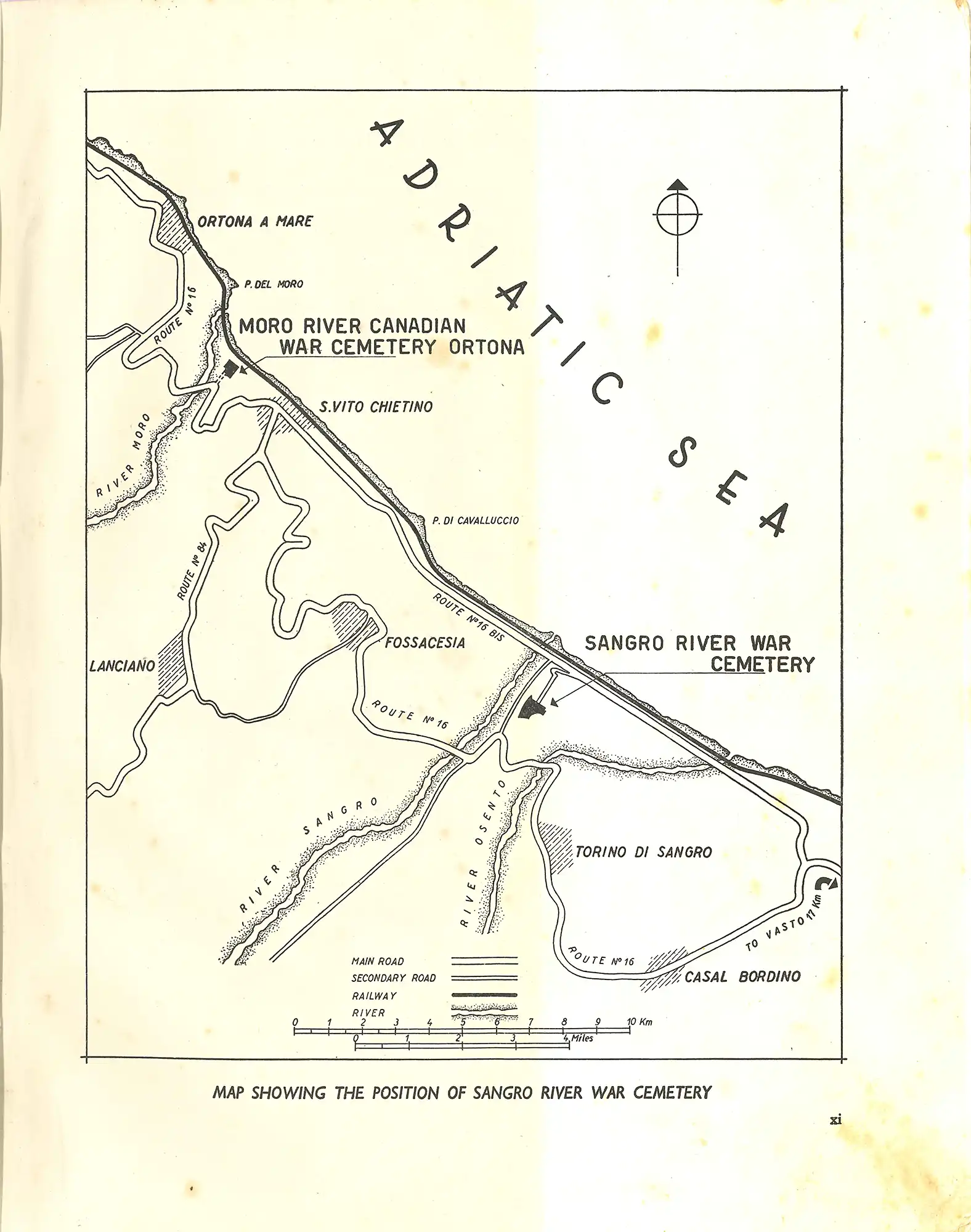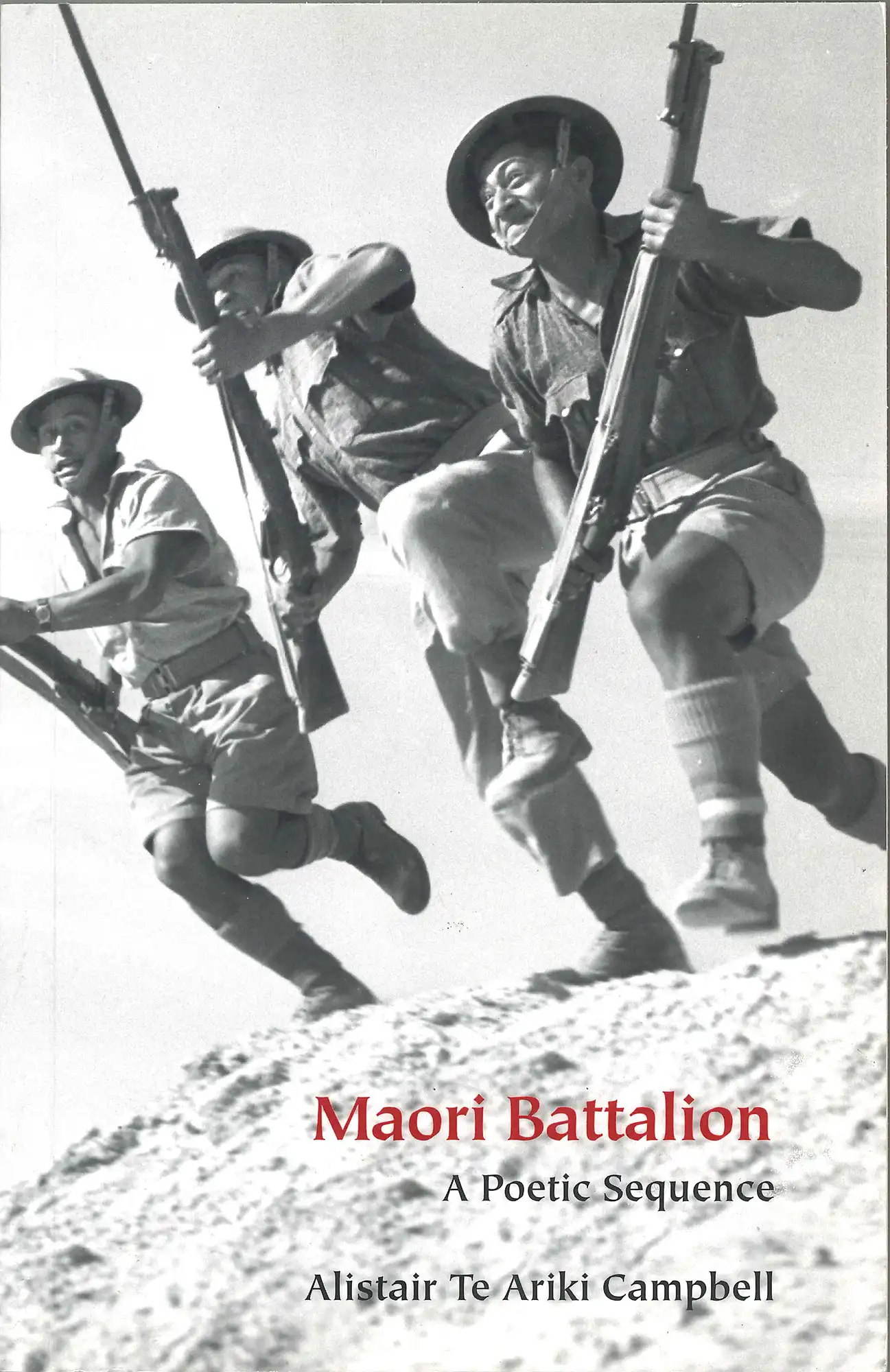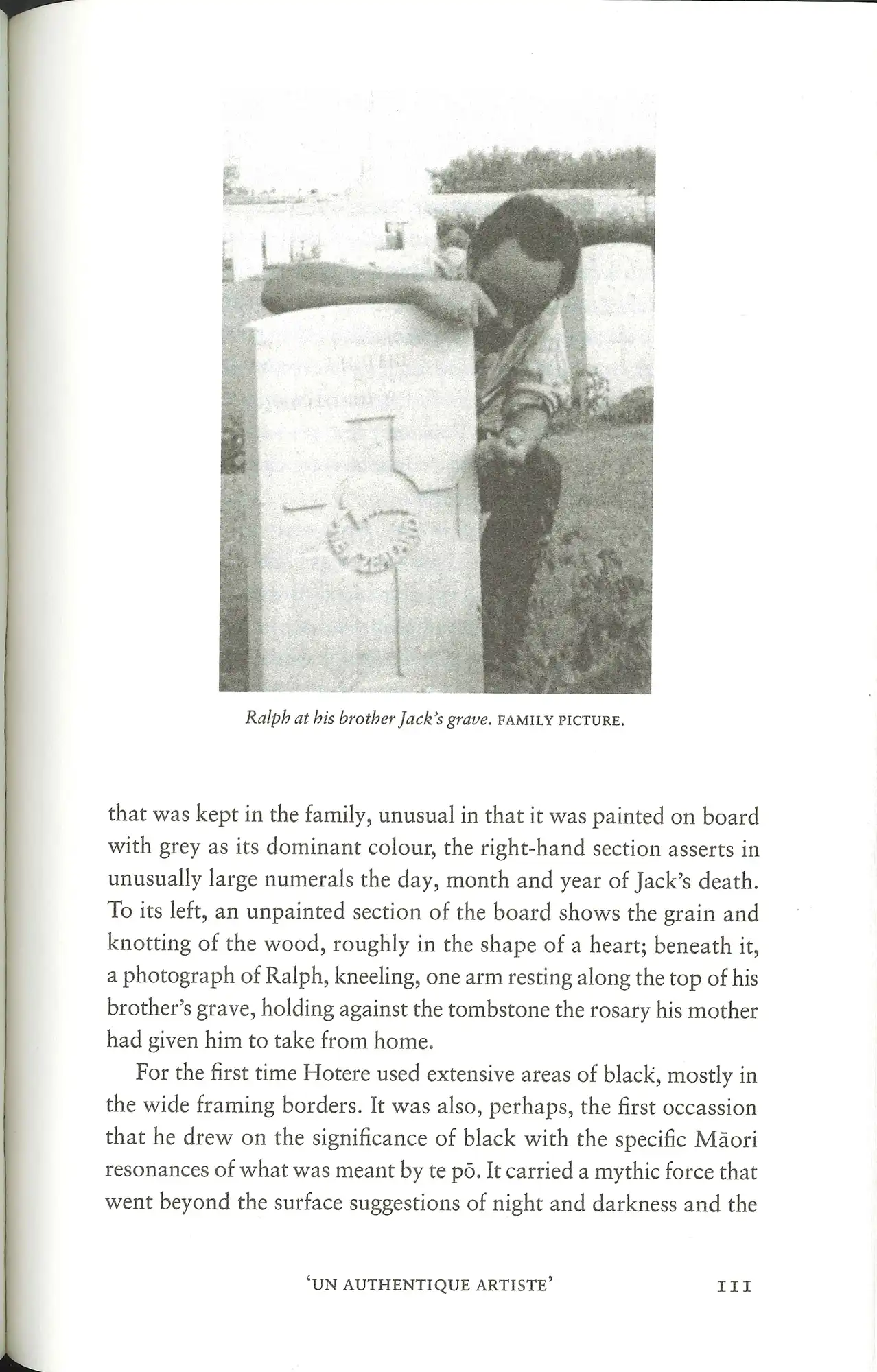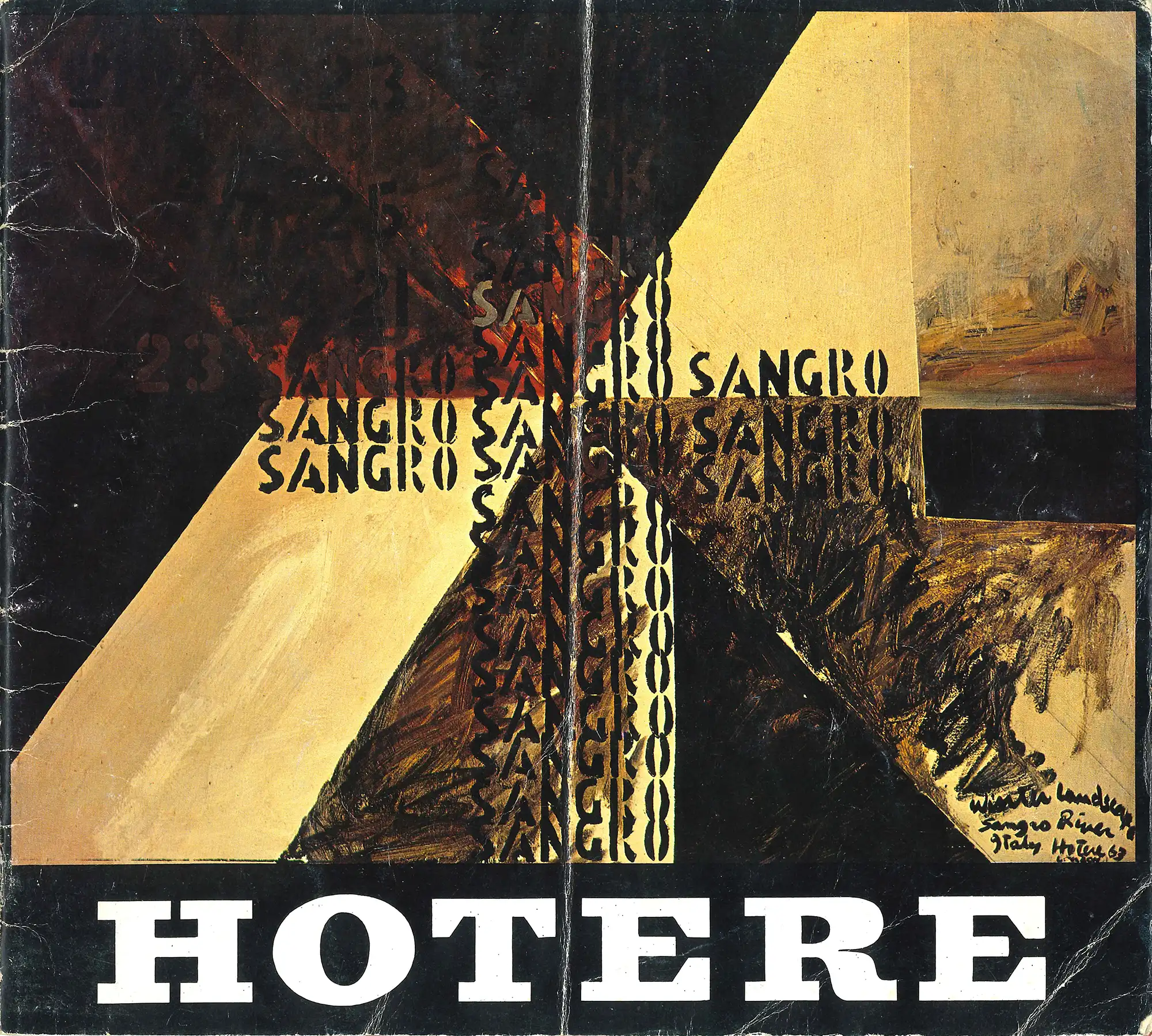Case 11
- Sangro River, Italy

Imperial War Graves Commission, The war dead of the British Commonwealth and Empire…Sangro River War Cemetery Part II. London: The Commission, 1955. SPRH 940.53 WAR
When Hotere was nine, Jack, his older brother, enlisted and eventually joined the 28th Māori Battalion. On 23 December 1943, two days before Christmas, Jack, aged 22, was killed during an engagement at Sangro River, near Orotona, on the Adriatic coast, Italy. Hotere’s brother’s death was a deeply personal event. In 1963, he travelled to the Sangro River cemetery and visited his brother’s grave site. ‘Sangro’ was the result, in effect, one of his first anti-war paintings. Sometime after 1955, he obtained this copy of the War Graves Commission publication that lists his brother amongst the names of the others fallen in battle. On display is a map of the Sangro River area and a detail of the entry on his brother. On the title page, Hotere has written ‘Jack Hotere’ and the name of ‘Whito Arona’, the name of another Hokianga lad killed in battle.

Imperial War Graves Commission, The war dead of the British Commonwealth and Empire…Sangro River War Cemetery Part II. London: The Commission, 1955. SPRH 940.53 WAR
Open image in new window

Detail of entry for Private Jack Hotere, 28th Maori Battalion, from The war dead of the British Commonwealth and Empire…Sangro River War Cemetery Part II. London: The Commission, 1955. SPRH 940.53 WAR

Detail of entry for Private Jack Hotere, 28th Maori Battalion, from The war dead of the British Commonwealth and Empire…Sangro River War Cemetery Part II. London: The Commission, 1955. SPRH 940.53 WAR
Open image in new window

Alistair Te Ariki Campbell, Maori Battalion. A poetic sequence. Wellington: Wai-te-ata Press, 2001. SPRH 821 CAM
Another who lost a brother was poet Alistair Te Ariki Campbell (1925-2009). Stuart Alexander Maireriki Campbell, also of the 28th Māori Battalion, was killed in action on 11 April 1945. Campbell’s poetic sequence that leads up to the fateful Italian campaign resonated with Ted Middleton, Hotere’s chess partner. Undoubtedly knowing how significant the war and its effects was to Hotere, he gave this very appropriate book-gift to him in March 2002.

Alistair Te Ariki Campbell, Maori Battalion. A poetic sequence. Wellington: Wai-te-ata Press, 2001. SPRH 821 CAM
Open image in new window

Vincent O’Sullivan, The dark is light enough. Ralph Hotere A biographical portrait. Auckland: Penguin Books, 2020. Private Collection
The Queen Elizabeth II Arts Council grant Hotere secured in 1978 allowed him to travel back to Italy and revisit his brother’s grave. Again, it was a visit full of emotion, and again it prompted him to respond artistically with another series: ‘Return to Sangro’. The reason behind both series remained the same. As he succinctly stated: ‘Basically, they are about the stupidity of war’ (O’Sullivan, 110). During the 1978 visit, he hung a rosary over his brother’s grave; a gift from his sisters. This family picture depicts him at his brother’s grave.

Vincent O’Sullivan, The dark is light enough. Ralph Hotere A biographical portrait. Auckland: Penguin Books, 2020. Private Collection
Open image in new window

Dunedin Public Art Gallery, Ralph Hotere. A survey 1963-73. Dunedin: Dunedin Public Art Gallery, 1974. SPRH 759.993 HOT
‘Winter Landscape Sangro River’ (1963) is one of the most eye-catching of Hotere’s ‘Sangro’ series, even though it is immersed in feelings of loss, remembrance, and death. The Union Jack image (something he would return to) is formed by geometric shapes and diagonals of red and black, a crucifix image formed by the repeat of the word ‘Sangro’, and numbers that are barely distinct on the top left which represent the ages of those fallen in the battle of Sangro. This and others in the series were begun just after visiting Sangro River, some painted in Vence, 1962-63, and others finished in London, 1964. The original of this copy is in the Dunedin Public Art Gallery.

Dunedin Public Art Gallery, Ralph Hotere. A survey 1963-73. Dunedin: Dunedin Public Art Gallery, 1974. SPRH 759.993 HOT
Open image in new window




